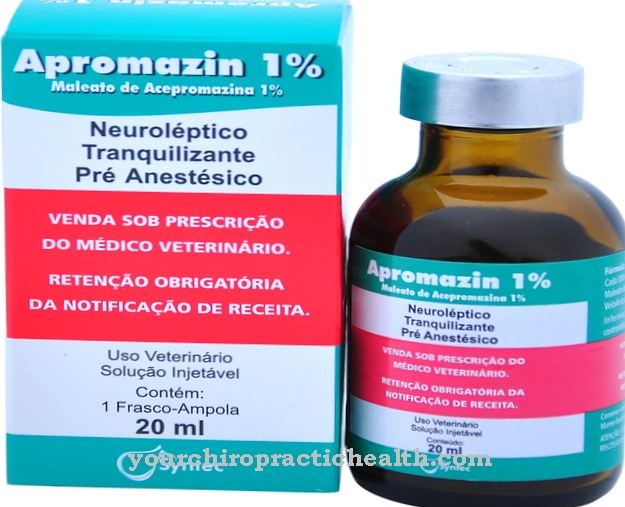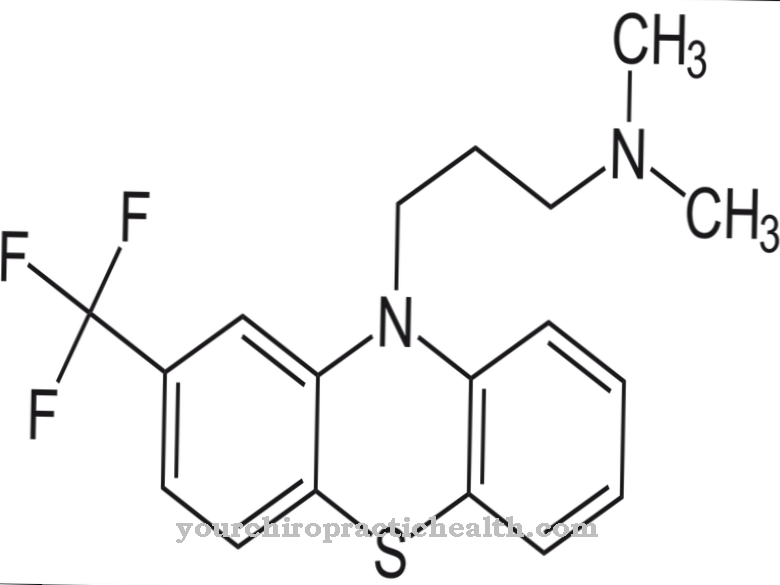At Sotalol it is a pharmacological agent that belongs to the beta blocker category. The drug is primarily used to treat cardiac arrhythmias. Sotalol is a special beta blocker that does not have a phenol ether structure. The structure of the substance is also similar to beta-isoprenaline.
What is Sotalol?
The drug Sotalol is one of those beta blockers that are non-selective. Because the active ingredient is not limited to a specific binding to the beta-1 adrenoceptors. Unlike the drugs Oxprenolol and Acebutolol, it has no so-called sympathomimetic activity.
Basically, the substance sotalol occurs in the form of racemate. Thus, potassium channels are blocked. In addition, the drug sotalol has an L-shape, which is why it is effective as a beta blocker. The drug also has a so-called enantiomeric unit, which influences the effectiveness of the substance.
Pharmacological effect
Basically, the drug Sotalol causes the potassium channels to close. For this reason, the drug Sotalol is one of the third class antiarrhythmics. The active ingredient extends the refractory period and the action potential. It also blocks special beta-1 receptors inside the heart. As a result, the conduction speed and the contractility of the heart muscle are reduced.
In addition, the frequency of the heart and the excitability of the heart are reduced. In addition, there is an inhibition of the sympathetic system and pure secretion. This lowers the patient's blood pressure in the long term.
All antiarrhythmics of the third class are characterized by the fact that they block the potassium channels. The active ingredient sotalol slows down the potassium flow that is responsible for repolarization. Special electrophysiological measurement methods have shown that the action potential of the isolated heart muscle cells is extended. As a result, the refractory period of the cells of the heart muscle is also extended. The inhibition of the potassium channels is primarily responsible for this.
The bioavailability of the active ingredient Sotalol is almost one hundred percent. However, no binding to plasma proteins can be detected. Basically, the control options of the drug are rather limited, since the plasma half-life is around 15 hours.
The active substance is primarily excreted renally. For this reason, the dose must be adjusted in patients with existing kidney failure. Due to its extremely long plasma half-life, the drug Sotalol is one of the beta blockers with the longest duration of action.
Medical application & use
The drug Sotalol is primarily used in the treatment of various cardiac arrhythmias. The drug is therefore a so-called antiarrhythmic.
Possible areas of application for the active ingredient are, for example, coronary heart diseases, cardiac arrhythmias and arterial hypertension. Because the drug is also able to lower blood pressure.
You can find your medication here
➔ Medicines for cardiac arrhythmiasRisks & side effects
Sotalol is characterized by a number of possible undesirable side effects that must be considered before administering the drug. In particular, the blockage of the potassium channels has the consequence that the drug triggers special side effects in some cases. This also distinguishes Sotalol from numerous other beta blockers. It is particularly characteristic that the substance sotalol itself can lead to cardiac arrhythmias. Torsade de pointes tachycardia is a particularly dangerous complication. It sometimes triggers ventricular fibrillation, which in some cases results in immediate cardiac death. Such side effects are particularly evident with kidney weakness, high doses and electrolyte disorders.
The so-called long QT syndrome can also lead to similar side effects. Medical research studies have shown that women are three times more likely than men to experience torsades de pointes tachycardia while taking Sotalol. For this reason, administration of the drug sotalol should be avoided if the QT time is prolonged.
The active ingredient sotalol is also contraindicated for some other complaints. These include, for example, sinus bradycardia and asthma attacks. This is because a so-called bronchoconstriction is possible because the drug sotalol activates the beta-2 receptors. Avoiding Sotalol is also recommended in the case of AV conduction disorders. Finally, there is a risk of hypoglycaemia, especially in patients with diabetes, since the blocked beta-2 receptors inhibit glycogenolysis.
Further contraindications are, for example, pregnancy and breastfeeding. Because the active ingredient sotalol passes into breast milk. Basically, the undesirable side effects and complaints of the drug Sotalol occur with different frequencies. In addition, they differ depending on the individual case and person in their severity, their severity and the combination of various side effects. Some patients who are treated with the drug Sotalol do not suffer from any undesirable side effects. Other people are affected by mild to severe symptoms.
It is therefore particularly important to carefully consider the individual risk factors of the respective patient, such as an existing kidney weakness, before taking the drug Sotalol for the first time. In the course of this, the attending physician discusses the patient's personal medical history in order to keep the risk of serious complications while taking the medication as low as possible. In addition, it is the responsibility of the patient to contact a doctor immediately if any symptoms arise. It may be necessary to stop Sotalol and find an alternative therapy option.












.jpg)



.jpg)










.jpg)
